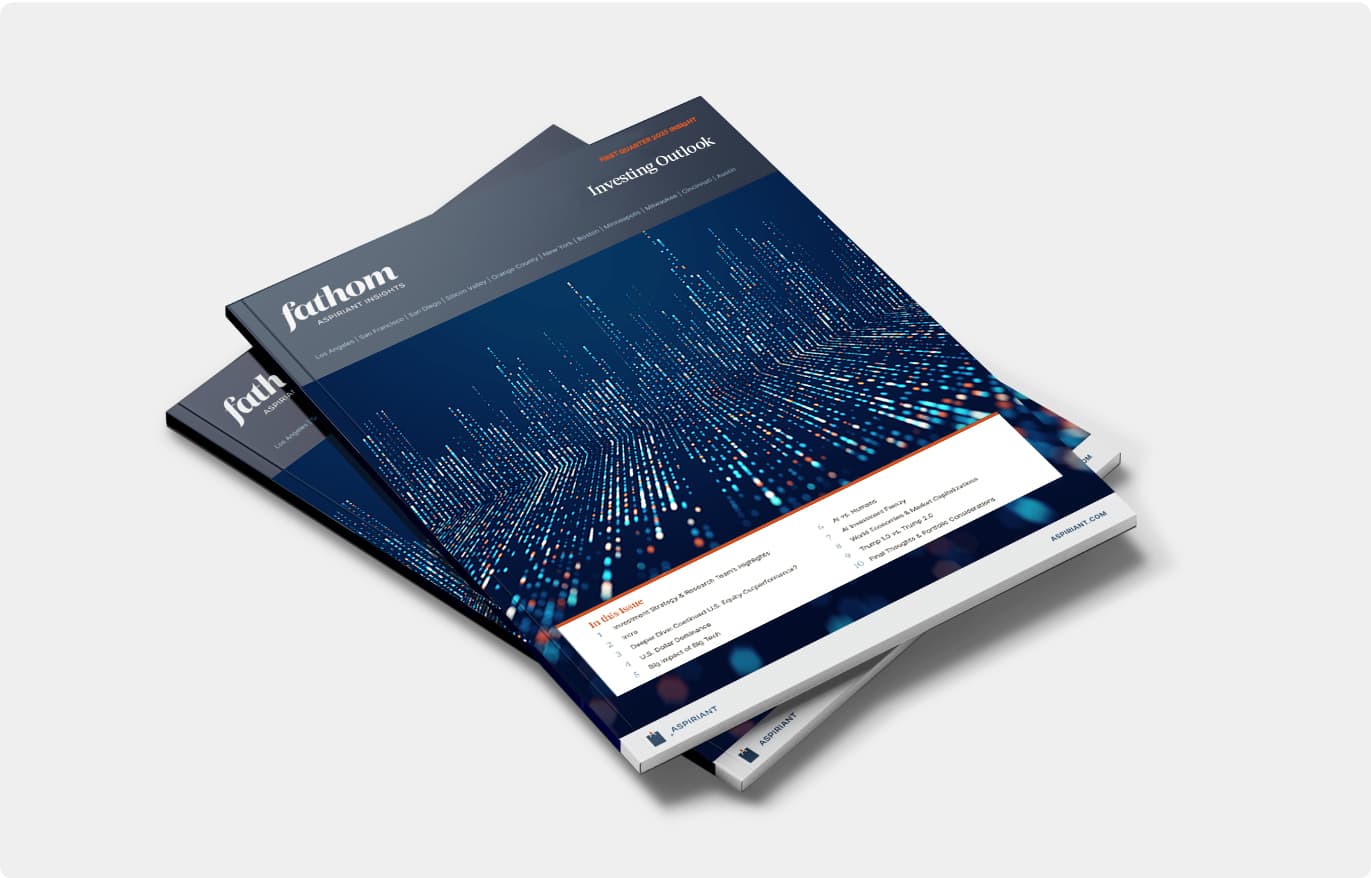
Investment Strategy & Research (IS&R)
Get an inside look at our Investment Strategy & Research (IS&R) team’s first-quarter 2025 analysis of the economic landscape. This summary covers key market trends, AI-driven investment shifts, political and fiscal challenges and portfolio considerations. For a deeper dive, access the full Insight report here.
Highlights
- U.S. Economic Stability & Federal Reserve Policy: The United States maintains modest gross domestic product (GDP) growth and strong employment, with inflation gradually receding. The Federal Reserve (the Fed) has implemented rate cuts and held its target rate at 4.50%. While the Fed has signaled a readiness to ease further if economic conditions weaken, future policy decisions remain uncertain and will depend on evolving economic data.
- Stretched Valuations & AI-Driven Earnings: U.S. equity valuations remain high, reflecting market expectations of strong earnings growth driven by artificial intelligence (AI). International markets, by contrast, present more reasonable valuations, particularly for value stocks.
- Big Tech & AI Market Disruptions: AI advancements and Big Tech’s dominance continue to shape financial markets. While AI capabilities are evolving rapidly, historical trends suggest that industry leadership shifts over time. Some U.S. firms may be overinvesting in expensive AI infrastructure, creating potential long-term risks if expected returns fail to materialize.
- Trump 1.0 vs. Trump 2.0 – Economic & Policy Uncertainty: A second Trump administration, with Republican majorities in both chambers, sets the stage for policy shifts in trade, energy and immigration. However, fiscal challenges—including a $1 trillion interest burden and a rising federal deficit—limit financial flexibility.
Macro Environment at a Glance
AI Developments & Market Dynamics
AI advancements are accelerating rapidly, with mathematics seeing the most dramatic progress relative to human benchmarks—AI accuracy in competition-level math increased from approximately 6% in 2021 to 90% within two years.
Amazon, Alphabet, Microsoft, and Meta, among others, view AI as an existential threat, fueling a dramatic surge in capital expenditures (CapEx). Their combined CapEx now accounts for roughly 23% of total U.S. spending—up from just 3% a decade ago—with overall CapEx more than doubling since 2010 and rising 40% since 2021. Concurrently, research and development (R&D) spending has quadrupled since 2010 and surged an additional 60% in recent years.
Yet, returns may take years, and lower-cost, open-source models like DeepSeek’s R1 pose competitive risks. Following the announcement of its R1 model, Nvidia experienced the largest single-day market value loss in history—shedding nearly $600 billion.
Trump 1.0 vs. Trump 2.0 – Political & Fiscal Challenges
With Republican majorities in Congress, Trump’s return signals sweeping policy shifts in trade, energy and immigration. However, unlike his first term, robust labor markets, inflation, high interest rates, and fiscal constraints limit the scope for pro-growth policies.
Fiscal challenges further complicate the picture as interest costs now exceed $1 trillion—$600 billion more than in 2016—while the deficit surpasses 6.5% of GDP. With two-thirds of the $6.75 trillion budget tied to mandatory spending, fiscal options remain tight.
For Trump, the S&P 500 once served as an economic scorecard, surging nearly 200% since 2016. However, with valuations at 27 times trailing earnings and 25 times forward earnings, sustaining this performance may prove difficult.
Final Thoughts & Portfolio Considerations
- U.S. Equity Valuations Are Elevated: Market valuations remain high, driven by AI-fueled earnings expectations. The market anticipates even stronger growth over the next decade compared to the past 10 years.
- Global Diversification Remains Critical: While Europe, Japan and emerging markets face distinct economic challenges, their equity valuations are generally more reasonable—especially for value stocks. Given differences in economic cycles across regions, diversifying into value stocks and non-U.S. equities could provide portfolio tailwinds over the next decade.
- Fixed Income Positioned for Stronger Returns: Investment-grade bonds offer more attractive yields than in recent years and may act as a stabilizing force if equity markets experience volatility.
- Alternative Investments Enhance Risk Management: For portfolios with diversifiers, strategies such as long/short investing, relative value, global macro, and gold can improve stability and help mitigate risk.
| Download Insight highlights | Download full Insight analysis |

 Talk to us
Talk to us 






